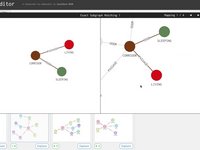metis II
Artificial intelligence methods for auto-completion of designs based on semantic building information (BIM) to support architects in early design phases
The aim of the DFG project “metis II” is methods for intelligent auto-completion of building designs. Using artificial intelligence (AI) approaches, information from digital semantic models (BIM) is extracted from similar building designs and additions to the architect's proposal are suggested. The project “metis II” is based on the results of metis I (“metis - Knowledge-based search and query methods for the disclosure of information in semantic models (BIM) for research in early design phases” funded by the DFG from 2013-2017).
metis I
Knowledge-based search and query methods for the development of semantic information models (BIM) for use in early design phases
German Research Center for Artificial Intelligence GmbH | TUM – Chair for Architectural Informatics
The aim of this research project is to develop innovative research methods to support ease of design in the conceptual design phase. Is it known that in the early stages of design only a general understanding of construction requirements and design parameters are taken into account. The use of references from built architectural designs is an established method to develop ideas into buildable solutions, to illustrate design parameters or demonstrate new possibilities. The existing projects serve as a source of knowledge in addition to example of spatial arrangement that demonstrate solutions for specific architectural forms. The use of references is an efficient method, both in early and late design phases. Core objectives of the project:
- Development of database of specific design components from references
- Formalization of knowledge in building information models
- Methods and models for querying based on formal structures
- Description and query language for spatial configurations
Studies have shown that spatial arrangements of objects can be retrieved as a pictorial-isomorphic representation, so that the understanding of distance and space can be read from the objects. The use of semantic fingerprints is proposed as a way of describing specific arrangement of objects in a spatial configuration analogous to the way that fingerprints can be used to identify a person.
funded by German Research Foundation
